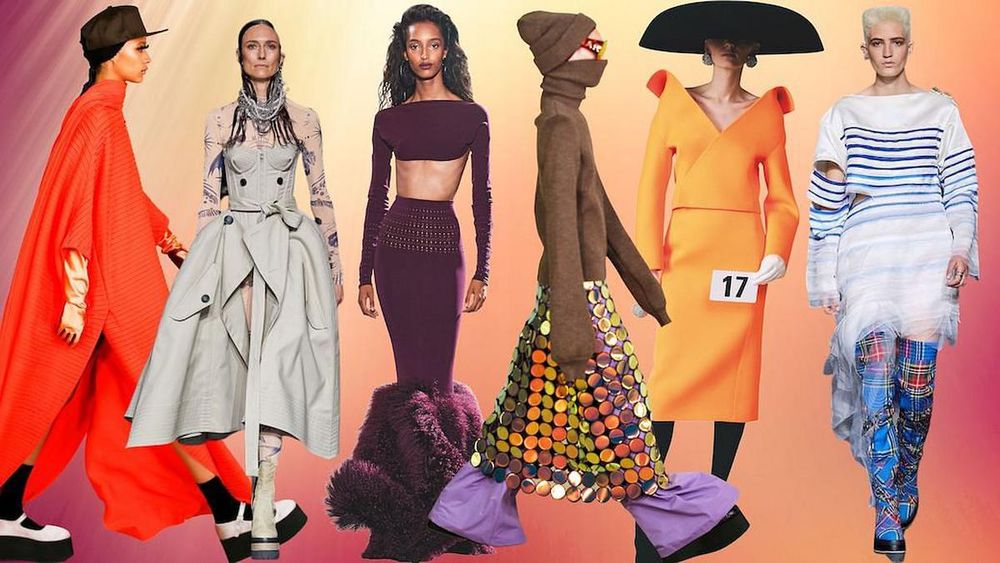
Fashion, like much of the rest of the world, is entering a period of re-emergence. This season marks a splashy return for some of fashion’s biggest personalities and most bold-faced names after their hitting pause in some way or another. The reasons for their breaks vary—some were pandemic-related, like Marc Jacobs’s retreat from the runway; others were due to sudden deaths, like at the House of Alaïa. For a brand such as Balenciaga, its return to the couture calendar was a strategic move of timing and vision; while at Jean Paul Gaultier, it was about exploring new frontiers through a new collaboration model.
BALENCIAGA
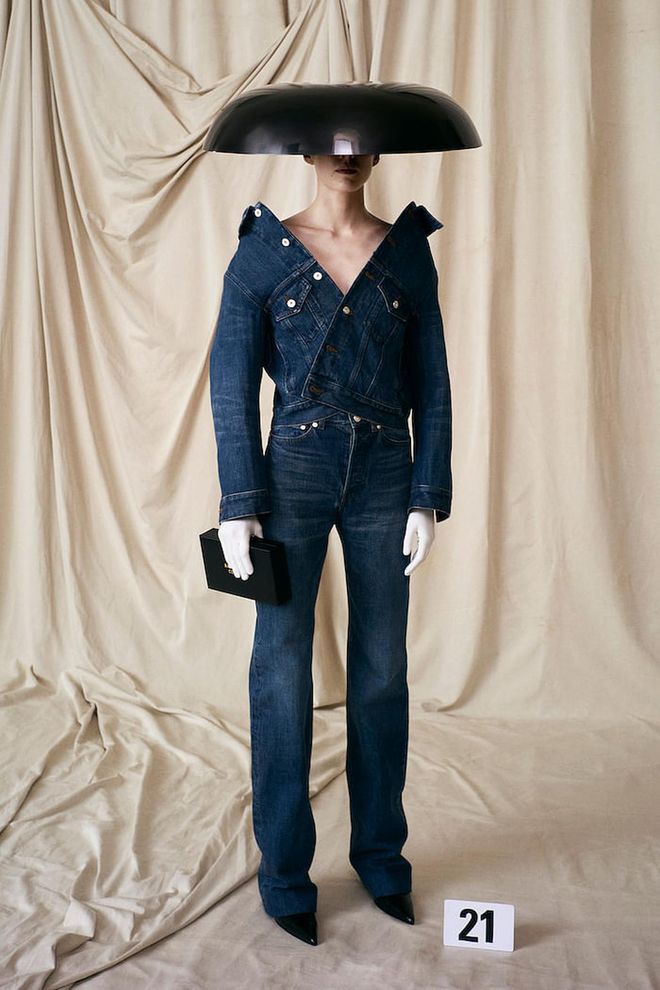
Photo: Balenciaga
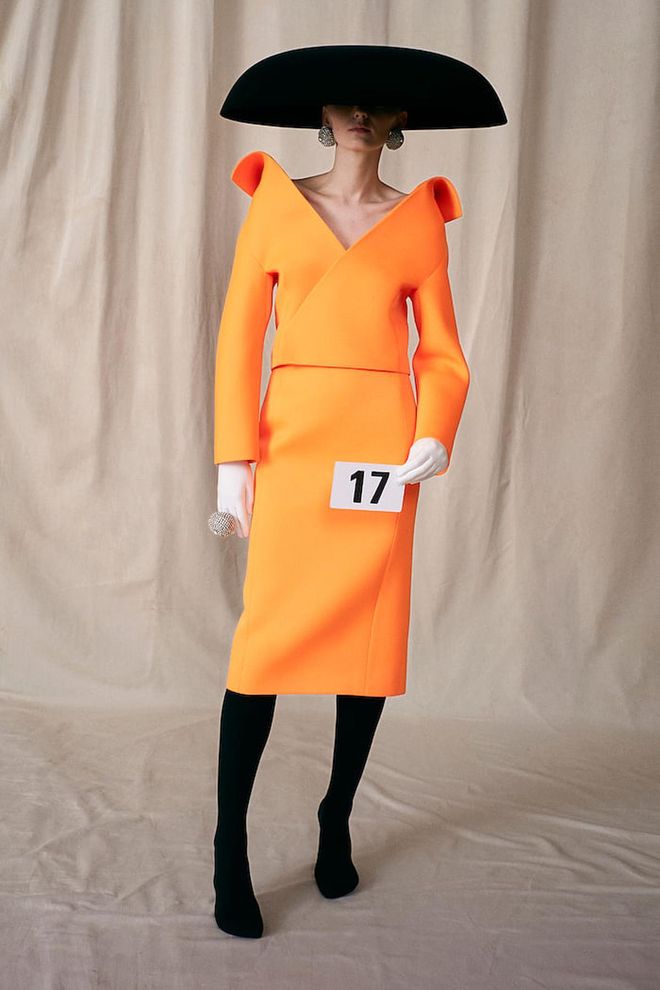
Photo: Balenciaga
It was 53 years ago that Cristóbal Balenciaga closed the doors to his haute couture salon for good. The couturier that Christian Dior called “the master of us all” was more a sculptor whose medium was fabric, innovating new textiles and shapes that are used even to this day. In fact, so much of what we think of when it comes to mid-century couture can be traced back to Balenciaga. His house laid dormant until it was snapped up by the conglomerate known today as Kering and Nicolas Ghesquière brought it back into mainstream consciousness with a commercially successful 15-year run. For the past six years, it has been under the stewardship of Demna Gvasalia, who turned it into a billion-dollar brand by elevating sneakers, hoodies and even Crocs into wait list-worthy status symbols. But until now, no one has ever attempted to resuscitate the couture business— understandably so, as it remains one of fashion’s weightiest heritage. That all changed this past July, when Gvasalia presented the first Balenciaga haute couture collection since 1968. The designer framed that decision as nothing less than a calling. “It is my creative duty to the unique heritage of Mr Balenciaga to bring the couture back... it is the very foundation of this [102-year-old] maison,” said Gvasalia. Some might wonder about the rationale behind relaunching haute couture in today’s fashion landscape, where instant gratification and economy of scale often take precedence over handmade, one-of-a-kind creations, but Gvasalia sees it as more crucial than ever. “Couture is the highest level of garment construction that is not only relevant in today’s [mass- production] industry, but even absolutely necessary for the survival and evolution of modern fashion,” he said.
Related article: Balenciaga Finds An Unlikely Campaign Star In Justin Bieber

An archival Balenciaga look. (Photo: Thomas Kublin/Balenciaga)
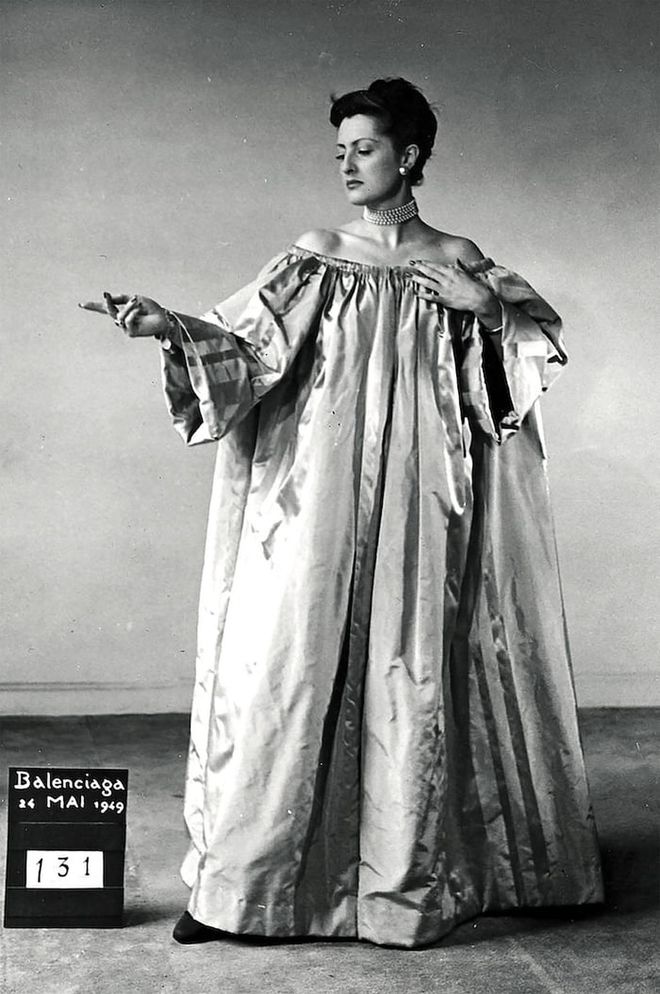
An exploration of silhouette by Cristóbal Balenciaga. (Photo: Balenciaga)
Where Gvasalia’s pandemic-era presentations for the House have utilised the digital format to the fullest—recent outings include a virtual reality game, a sleek music video and a deepfake manipulation—for his haute couture debut, he waited until physical shows could return. To set the scene, he reconstructed Balenciaga’s whitewashed, stuccoed salon at Avenue George V with surreal exactitude—the carpets stained, the furniture scratched and the colours faded just so, as though the place has remained as is, having aged through the decades since Cristóbal shut up shop. Gvasalia even called the collection “Balenciaga 50th Couture”, signalling his intent to pick up where the master left off, and soundtracked the show to absolute silence, the way Cristóbal used to do it—the only sounds being the footsteps of the models, the rustle of fabric, and the jangling of jewellery and embellishment.
Related article: Will Upcycling Change The High-Fashion Game For Good?
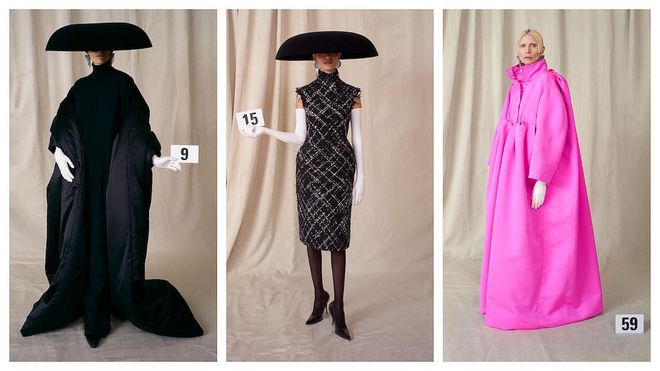
Photos: Balenciaga
The collection itself is filled with Cristóbal-isms: cocooning coats; sweeping lines; Watteau backs; hourglass shapes; and collars constructed away from the body to elongate the neck. But it is no mere homage or blind reproduction. Gvasalia made it his and he made it modern. The key is an energy that seem harnessed from the streets—the one he captured so well and to such acclaim when he founded VETEMENTS.
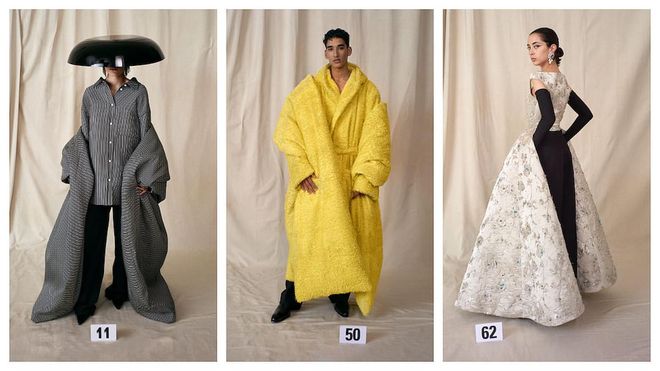
Photos: Balenciaga
The result is couture that is decidedly not for society swans in their gilded penthouses and palazzos—or to be more accurate, not just for them. Sure, there are ball gowns and opera coats, but these have the ease and dynamism of streetwear, which Gvasalia referenced through an anorak collar here, a couple of cargo pockets there. There is also denim, woven on vintage looms in Japan and finished with silver buttons, as well as trench coats, t-shirts and dressing gowns cut from the most luxurious materials. In short, it is a complete wardrobe proposition—every item the ultimate version of what it could be. It harks back to Cristóbal at the height of his influence, when clients such as Mona von Bismarck would order pieces by the dozens, down to her gardening clothes. In a radical move, Gvasalia also decided that his couture should be genderless, and thus showed many of the same looks on both male and female models. He opened the show with a series of laser-sharp suiting (all black, like how Cristóbal used to dress) on models of all genders with matching stoles trailing behind them. The finale was a group of billowing, floor-sweeping coat-gown hybrids that looked utterly alluring regardless of the gender of the model in them. Gvasalia put it best when he said, “Couture is above trends, fashion and industrial dressmaking. It is a timeless and pure expression of craft and the architecture of silhouette that gives a wearer the strongest notion of elegance and sophistication.”
ALAÏA
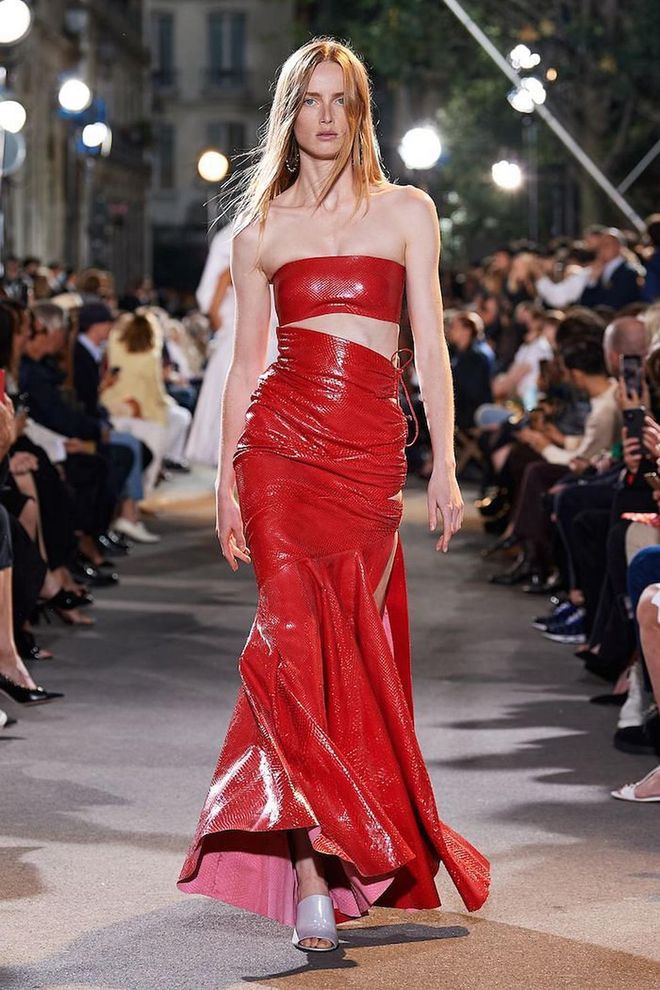
Photo: Alaïa

Photos: Alaïa
After the passing of Azzedine Alaïa four years ago, the Richemont-owned House took its time naming a new creative director, choosing instead to reissue archival pieces and develop unreleased patterns the late designer left behind. It made sense, as they were big shoes to fill and Alaïa himself famously never rushed his work—he thumbed his nose at the rules and timelines of the fashion system, and showed only when his collections were ready to his exacting standards. At a time when designers-as-creative-directors have become the rule, Alaïa was an exception—he was a designer’s designer who cut his own patterns and crafted his own samples. His design language is instantly recognisable, known the world over even if you did not know his name (Alaïa doesn’t advertise)—we have him to thank for the undying popularity of body-con dresses and fit-and-flare shapes. His work celebrated the female form through a masterful sculpting of fabric—his manipulations of knit and leather were unsurpassed—that put sensuality front and centre while never veering into vulgarity.
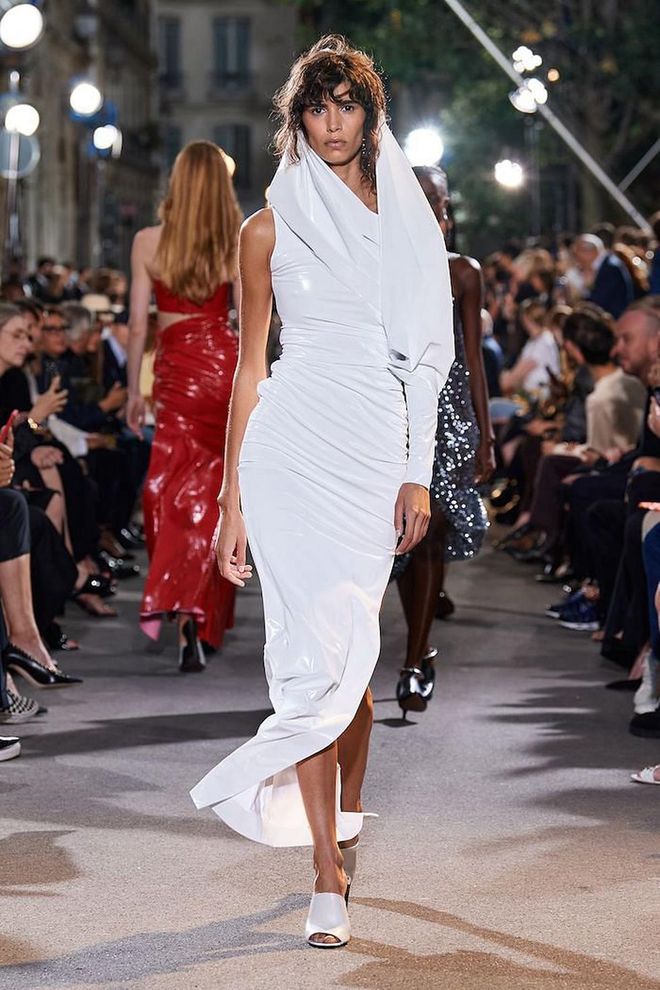
Photos: Alaïa
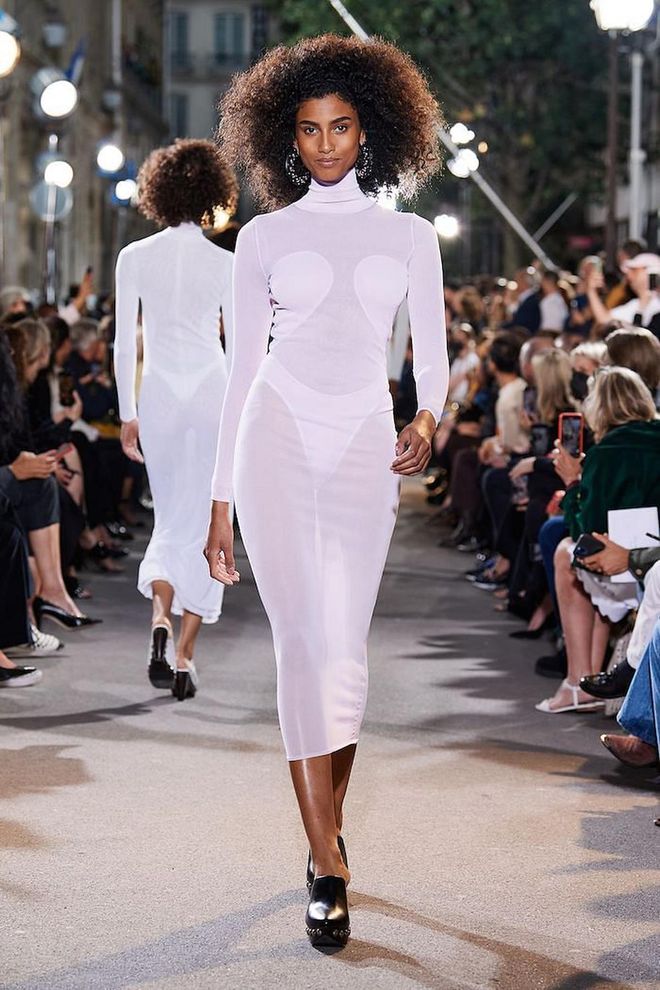
Photos: Alaïa
As befits the House, the designer who has been chosen to carry the torch at Alaïa is not some big, buzzy name. Pieter Mulier cut his teeth as the right-hand man of Raf Simons at Jil Sander, Dior and Calvin Klein; his Alaïa role marks his first go-around at the helm of a brand. He presented his debut collection during the most recent Haute Couture Fashion Week in July and in a nonconformist move that would have made the late designer proud, Mulier mixed in ready-to-wear with couture creations. As an opening statement, the intent is clear: Mulier’s approach to the House he inherited would be respectful instead of disruptive, as is common practice nowadays in the game of designer musical chairs. He even held the show outside, on the street where Alaïa used to live and work.
Related article: Pieter Mulier Brings The Heat In His Alaïa Debut
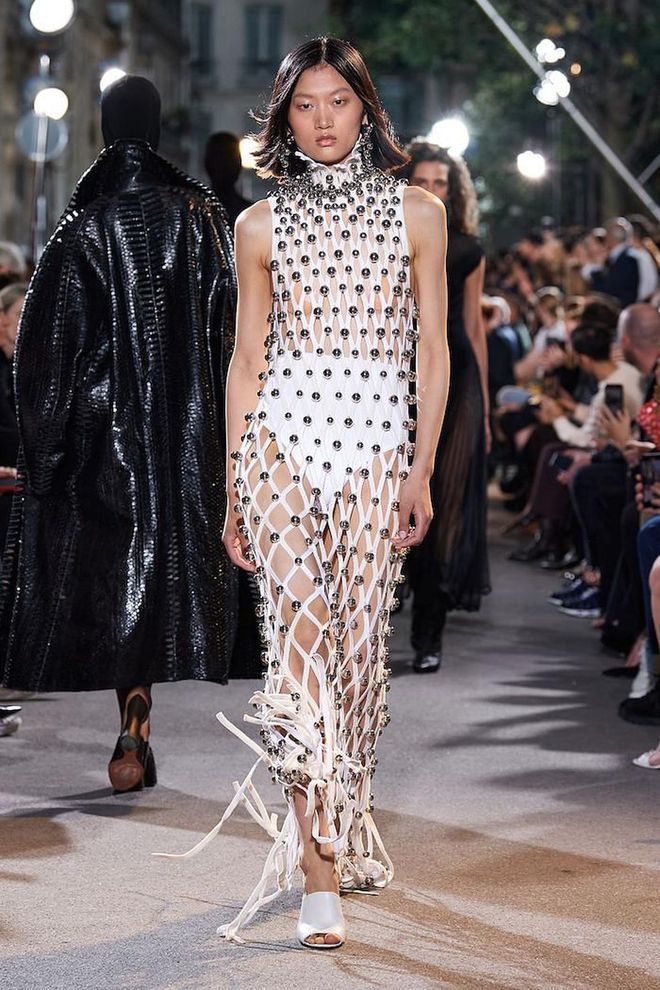
Photos: Alaïa
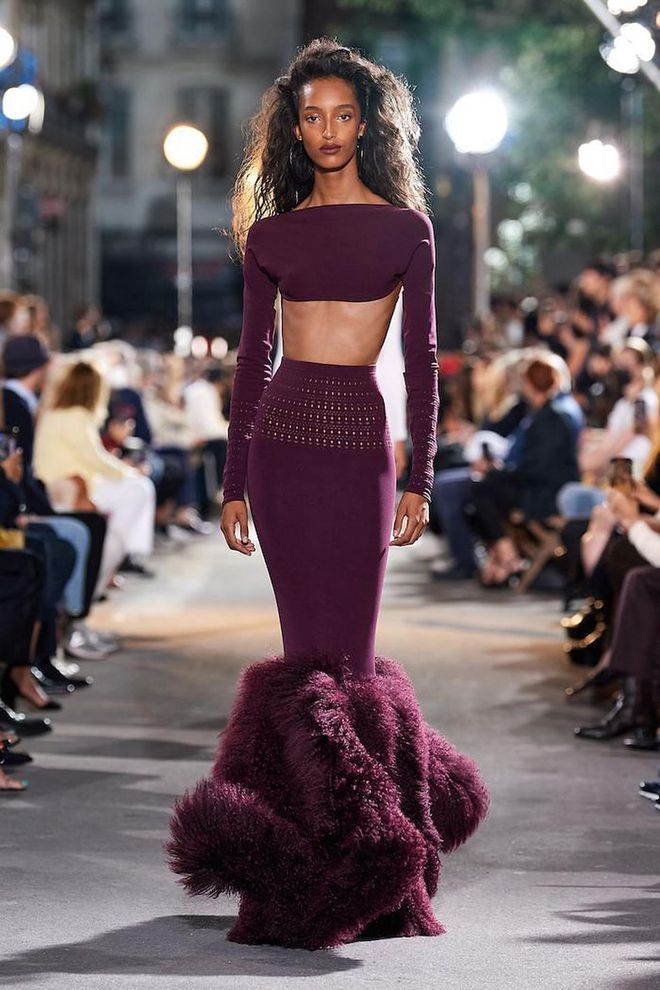
Photos: Alaïa
The collection itself reiterates the most definitive of Alaïa codes—the second-skin dresses, the fit-and-flares, the corset belts, the kicky little skirts, the cowl hoods, and the metal hardware on soft fabrics all made an appearance. What Mulier brought is a sense of cool—his eye for it honed for all those years working with Simons. There is a sporty ease to how his pieces sit on the body and the way they move, but these are definitely not sportswear. Though Mulier borrowed certain elements of athleticism such as bike shorts and bodysuits, the overall effect always reads glamorous and sensual. Even something as basic as a white poplin shirt is transformed from a workday essential into a bombshell- worthy showstopper. Other standouts include a red python bandeau dress, a cocoon of mint fur, and net dresses embellished with little silver globules. With his first collection, Mulier proves that he does not have to tear down the House. When the foundations are this great, one just has to build on it.
MARC JACOBS
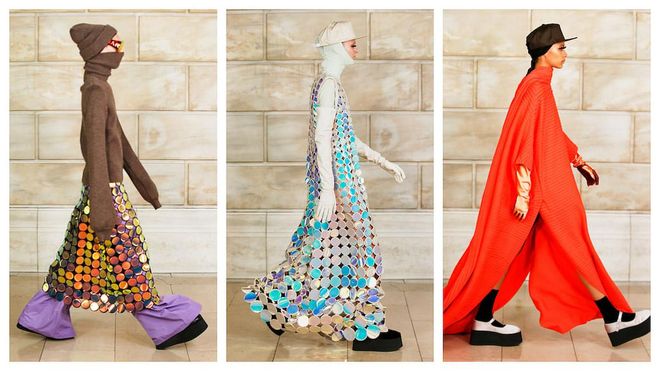
Photos: Marc Jacobs
All the fashion capitals have been hard hit by the pandemic, but perhaps none more so than New York, which found itself without a tent pole draw in the past year and a half. That honour had always gone to Marc Jacobs, the premier showman of American fashion whose show traditionally closed New York Fashion Week with a bang. Even after 2017, when Jacobs stripped back on his previously lavish sets, his clothes more than delivered when it came to spectacle and fantasy. But the last of these spectacles was in February 2020; as the pandemic raged on, he made the novel decision to hit pause on his runway collections. Since then, Jacobs has kept busy with the launch of Heaven, a secondary line of streetwear, in addition to The Marc Jacobs, his brand’s contemporary range.
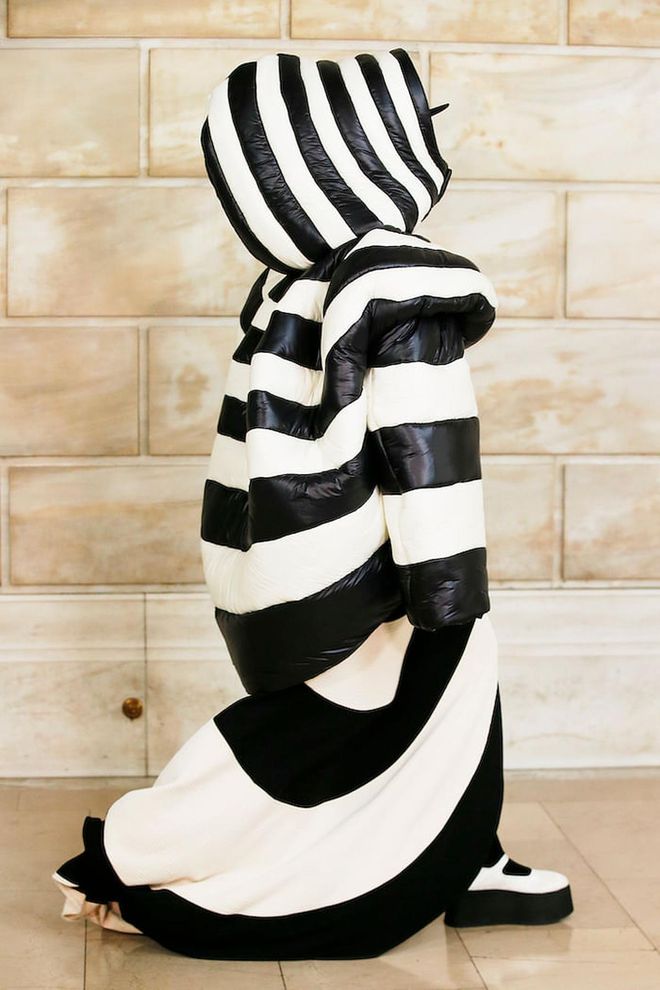
Photo: Marc Jacobs
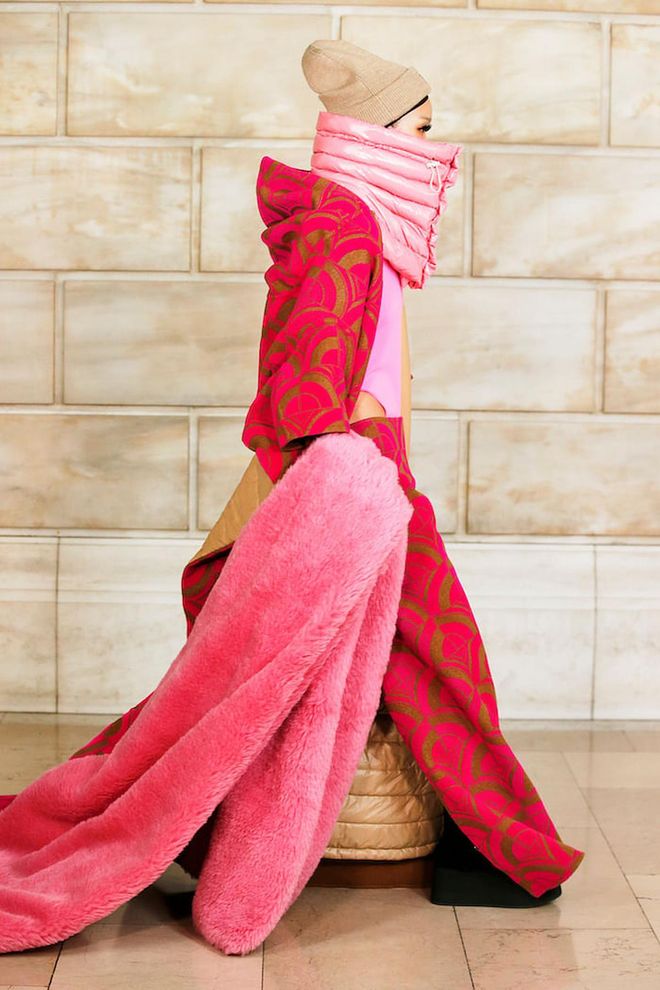
Photo: Marc Jacobs
As vaccinations began to roll out in the US, Jacobs staged a return to the runway. “While the world continues to change with unimaginable speed, my love for fashion, and the desire to create and share collections through this delivery system, endures,” said Jacobs of his runway comeback. Held in June, it was outside the fashion week calendar, but it demonstrated clearly why his presence has been missed. “Our decision to pause allowed us to slow down and to reflect, ruminate, re-evaluate and take a thorough inventory of what works, what doesn’t work, what we love, what we’re willing to let go of, and what has value, importance and meaning,” he continues. The resulting collection reads like a love letter to fashion, winding through various points in fashion history to arrive at a destination that is very, very Marc Jacobs.
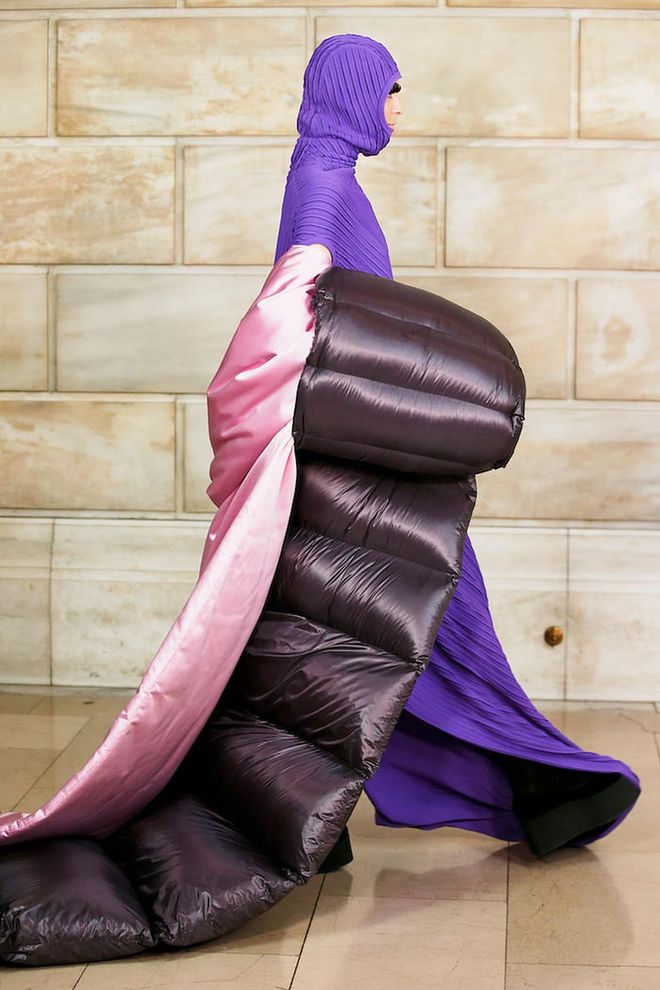
Photo: Marc Jacobs
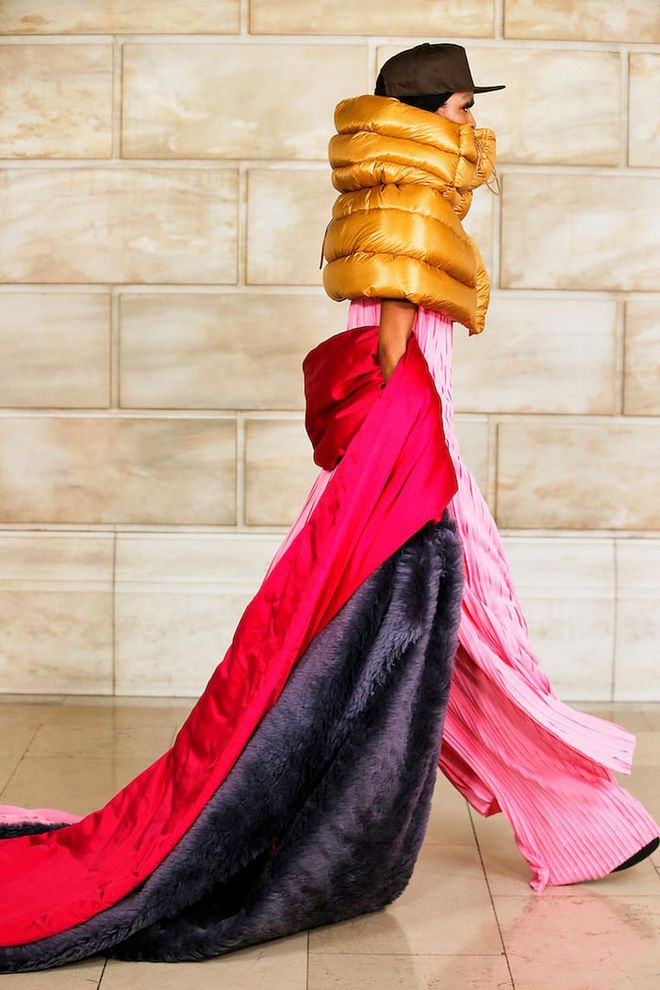
Photo: Marc Jacobs
It is as close to couture as Jacobs ever got, with the designer freely borrowing the cocooning, enveloping shapes of haute couture’s mid-century heyday and throwing in a liberal amount of Space Age references, and then filtering the whole thing through the lens of American sportswear, contemporary streetwear and Gen-Z irreverence. Jacobs also doubled down on layering. The collection features a panoply of hoods, snoods, beanies and masks—and those were just on the heads on the runway. Further into the show, there were cocoon coats, trailing faux-fur stoles, voluminous puffers, and dresses worn over knits, trousers, bodysuits and gloves. To drive the layering story home (and in a clever merchandising flex), Jacobs had his models walk out a second time—now unencumbered of all the swaddling layers to reveal the foundational garments underneath. It was a neat styling trick, but more importantly, it showed that Jacobs could excel at both statements and staples—proving along the way why he is the undisputed king of American fashion.
JEAN PAUL GAULTIER

Photo: Jean Paul Gaultier

Photo: Jean Paul Gaultier
It is not for nothing that Jean Paul Gaultier is often called the OG enfant terrible of fashion—he is never one to play by the arbitrary rules set by the fashion establishment. Long before inclusivity and gender fluidity became buzzwords, the designer was already centring subcultures, uplifting marginalised communities and upending gender conventions on his rambunctious runways. He announced his retirement in 2020, but left the door open for his couture label to live on through seasonal collaborations with designers of his choosing. The first of these arrived in July via a tie-up with Chitose Abe of Sacai.
While the partnership might have seemed to come out of left field, a closer look at the oeuvre of both designers reveals a match made in fashion heaven. Abe is one of the pioneers of collaged and hybrid designs, often mashing up cultures and different codes of dress—in her hands, a banker’s jacket segues into a military bomber, while a shirt dress can easily be spliced with a trench coat. Gaultier and Abe also share a fascination with toying with conventions, particularly those on the masculine-feminine spectrum; both enjoy a good subversion of uniforms and archetypes. One can just imagine Abe having a field day trawling through the vast Gaultier archives. “I knew from the beginning that I wanted to refer to Jean Paul’s archives. I already knew in my mind which looks even before I actually saw the archival pieces,” she told Kerry Pieri of Harper’s BAZAAR US.

Photo: Jean Paul Gaultier
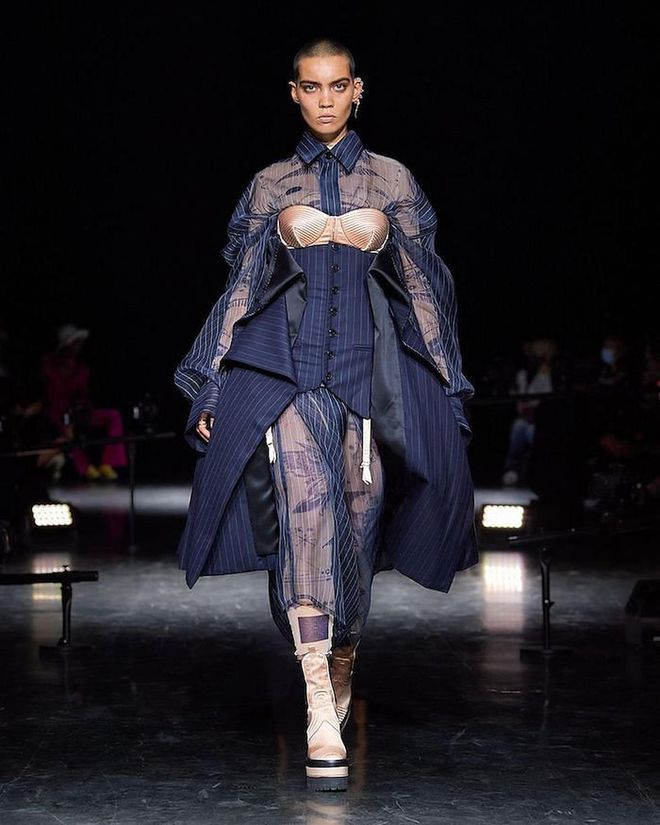
Photo: Jean Paul Gaultier
She tackled what is arguably Gaultier’s most iconic signature right out of the gate: The conical bra, which she melded onto a pinstripe bustier for the first look out. It appeared again on the last look, a cobalt blue boilersuit. In between, she took on other Gaultier signatures such as the pinstripe suit, the trench coat, military uniforms, Breton sweaters and tartan kits. “One thing that Jean Paul said was that ‘designing needs to be free’, so he really gave me total freedom to design this collection,” said Abe. What she did with that freedom was to deconstruct those codes and then put them back together in a very graphic, immediate, Sacai way.
The possibilities afforded by an haute couture atelier allowed Abe to go wild. “For a ready-to-wear brand, Sacai is also made with some complexity and we also only produce what has been ordered, so in some ways, working on couture did not feel all that unfamiliar. However, there were techniques and detailing such as hand embroidery and the usage of certain embellishments that one cannot achieve for ready-to- wear,” said Abe. The designer made full use of those techniques. There is a Balenciaga-esque bubble suit moulded out of MA-1 bombers; Aran knits and blue denim become blank canvases for fantastical displays of craftsmanship; and Gaultier’s signature blue-and-white sweaters gradate into ethereal wisps of organza or punkish raw-edged tartan. It was a gamble for Gaultier to hand over the keys to his Maison, along with so much creative freedom, but it paid off—the results are greater than the sum of its already great parts.